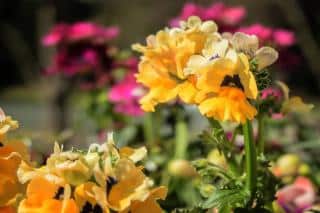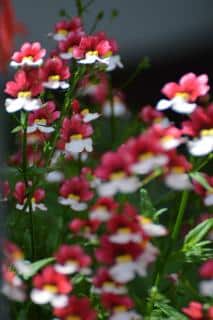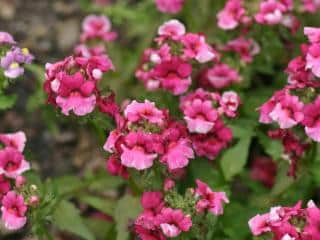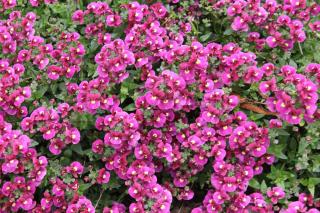

Nemesis is a cute annual that blooms abundantly with warm colors.
Summary list of Nemesis facts
Name – Nemesia
Family – Scrophulariaceae
Type – annual or perennial depending on the variety
Height – 12 to 20 inches (30 to 50 cm) depending on the variety
Exposure – full sun, part sun
Soil: rather rich – Flowering: early summer → early/mid-fall
In flower beds, along edges, in garden boxes or hanging pots, it is extremely ornamental and growing it is very easy.
Most appropriate is to sow in a sheltered spot starting from the month of March and put in place during the month of May.

Also, best wait for April to transplant specimens purchased in nursery pots to the ground.
Nemesis is a flower that is very well suited to growing potted for your garden boxes and pot arrangements.

Apart from that, provide for regular watering for nemesis grown in in pots.
At the end of the blooming, once the leaves have withered away, cut back as short as you can.
Nemesis is often particularly sensitive to powdery mildew.
As regards parasites, aphids is the most common predator, and it can wreck havoc among your plants.

All types of nemesis flowers are edible, though they don’t necessarily taste good.

Nemesis is quite distinctive thanks to the wide range of colors, from white to red, including yellow. It is also found appealing for its delicate fragrance and its abundant flowering.
Nemesis actually bears so many flowers that at times the tiny colored flowers overtake and cover its leaves.
They’ll be perfect in flower beds, rocky settings or to mark edges, and they’ll also look amazing in pots and garden boxes on your terrace or balcony.
Nemesis comes from the Greek root word nemesis, which stood for righteous anger. It was sometimes tied to the spirit of equilibrium, and also vengeance.
In summer, always favor watering in the evening to keep water from evaporating.